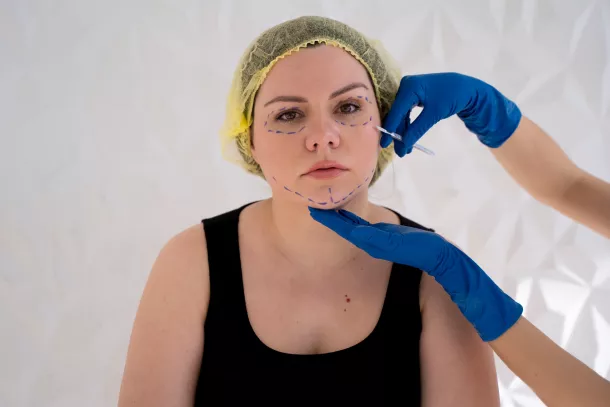Plastic Surgery Blog
Enhancing your natural beauty is a deeply personal journey, and plastic surgery can offer transformative results. Whether you’re considering a subtle change or a more dramatic procedure, it’s important to make informed decisions. In this blog, we explore the latest trends, expert insights, and essential tips to help you achieve your aesthetic goals safely and confidently.
Blog
Preview
Facial balance is a key factor in overall attractiveness. Whether it’s due to genetics, aging, or facial trauma, some individuals may feel their features lack definition. Facial implants offer a permanent solution to enhance the chin, cheeks, or jawline, resulting in a more proportionate and sculpted appearance. In our image-conscious society, individuals are increasingly aware […]
Non-Surgical Rhinoplasty: A Revolutionary Alternative
Revolutionizing Nose Reshaping Non-surgical rhinoplasty, also known as the “liquid nose job,” is transforming the landscape of cosmetic enhancements. Utilizing dermal fillers, this minimally invasive procedure provides quick, temporary solutions for nasal irregularities, eliminating the need for surgery. This article delves into the advantages, limitations, and increasing popularity of non-surgical rhinoplasty. Understanding Non-Surgical Rhinoplasty Non-surgical […]
Rhinoplasty and Age: Is There a Perfect Time for a Nose Job?
Timing Matters Rhinoplasty and age are significant considerations in cosmetic surgery. Rhinoplasty is one of the most sought-after cosmetic surgeries worldwide. But is there an ideal age to undergo this transformative procedure? From teenagers eager to correct congenital imperfections to adults addressing functional or aesthetic concerns, the decision to have rhinoplasty depends on a variety […]
Ethnic Rhinoplasty: Celebrating Diversity in Nasal Aesthetics
Embracing Individuality Ethnic rhinoplasty is a specialized field within plastic surgery that prioritizes preserving cultural identity while achieving aesthetic harmony. For individuals of diverse backgrounds, this approach respects unique nasal structures and celebrates the beauty of diversity. This blog explores the nuances of ethnic rhinoplasty, emphasizing the importance of cultural sensitivity and individualized care. Ethnic […]
The Evolution of Rhinoplasty: From Ancient Practices to Modern Techniques
A Journey Through Time Rhinoplasty, often colloquially referred to as a “nose job,” has a storied history that spans millennia. From ancient civilizations experimenting with reconstructive techniques to today’s advanced surgical procedures, rhinoplasty reflects humanity’s enduring desire to restore and enhance facial harmony. This blog delves into the fascinating evolution of rhinoplasty, tracing its roots […]
Sinus Infection Surgery: Comprehensive Guide to Relief
Sinus infection surgery, often referred to as sinus surgery, is a specialized medical procedure aimed at relieving chronic sinus problems that don’t respond to conventional treatments. It plays a vital role in improving the quality of life for individuals suffering from persistent sinus infections, blockages, or other related conditions. This article delves into the essential […]
Choosing a Facelift Surgeon in NYC: Important Questions To Ask
Finding Your Facelift Surgeon in NYC When considering a facelift, especially in a bustling hub like New York City, selecting the right surgeon is one of the most critical steps in ensuring a successful outcome. Facelift surgery is a delicate, nuanced procedure that requires a surgeon with both technical expertise and an artistic touch. To […]
Do’s and Don’ts of Rhinoplasty
7 Do’s and Don’ts of Rhinoplasty You’ve booked your rhinoplasty surgery, and the big day is just around the corner. Now comes the important part—preparing yourself to ensure the best possible outcome. From essential pre-surgery steps to post-op care tips, knowing what to do (and what to avoid) can make a world of difference in […]
Types and Cost of Rhinoplasty in NYC
You’re ready to transform your nose and enhance your overall appearance with rhinoplasty. Naturally, you want the most flattering, natural results possible. But concerns about the cost of rhinoplasty in NYC might have you considering options like Groupon deals or even traveling abroad for a discounted procedure. While saving money is important, there are certain […]










